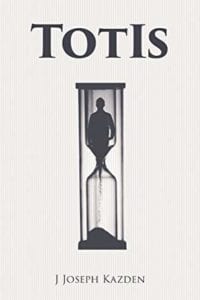
About the Book:
Einstein was not joking when he said “Reality is merely an illusion, albeit a persistent one.” This runner up winner of Shelf Unbound’s ‘2016 Best Indie Book’ explores the nature of human perception and consciousness. This exploration delves into the process that gives us, as biology, an experience of reality, and explores whether this process creates, instead, a perfect illusion, beyond which reality itself remains hidden.
TotIs invites you to be a part of the discussion with Socrates and his friends as they consider the nature and process of human perception, the experience it provides us and its meaning for our view of reality and the universe we live in.
Through the same learned question-and-answer technique perfected by Socrates in the era of Classical Greece, you are guided through the counterintuitive world of modern theoretical physics, exploring the crossroads of relativity, quantum theory, and the way that our experience, as observers of the universe, renders our reality an illusion.
For novices and experts alike, Author J. Joseph Kazden, with considerable finesse, presents his keen insights in a clear and comprehensible way.
As entertaining as it is profound, TotIs illuminates a hidden truth about the unity of the universe that will have significant ramifications in areas ranging from philosophy to cosmology to spirituality–and beyond.
Read an Excerpt:
Featured in Dec/Jan 2017 Issue: 2016 Best Indie Book Competition Winners
FROM CHAPTER 9
“A question has persisted since well before the time of the discovery of relativity, and it is this,” I said. “Does the universe exist if we’re not looking? I believe that the universe as we experience it does not exist when we’re not looking, because we’re actually creating it via our biology. A universe exists, but not this one of created human experience.”
“So how can we possibly expect to discover this universe you believe exists outside of our experience?” asked Neatono.
“Because nature has shown her hand, but we’ve been unable to interpret it properly, dependent as we are on explaining all via our experience of it,” I said.
“And what is this evidence nature has shown us?” Neatono asked.
“As we’ve experienced via QM, matter exhibits both wavelike and particle-like properties, and when we’re caught observing them, they will exhibit one or the other, but we have no idea when or how they change state. The theory is that they exist in a superposition of both states, and, upon observation, their probability wave function collapses, and they become one or the other. Now Doctors S. Haroche and D. Wineland won the Nobel Prize in Physics in 2012 for actually creating particles in superposition. Doctor Wineland specifically created one electron that existed in two of its possible orbital positions simul- taneously. How he did it is not the important point. That a particle is first in one place in space-time and then in two at the same time is a state change that occurs outside of time. This is not a particle moving to another place; it is a state change for a single particle. How long does it take for the particle to be in superposition? There is no now through which this transformation occurs.
Without a now, there is no flow of time at all.”
“But aren’t these results explained by QM’s theory and its mathematics?” asked Neatono.
“The same theory and mathematics created through the lens of our un- shakable belief in the reality of time’s arrow,” I replied. “I suggest that this shows us another possibility.”
